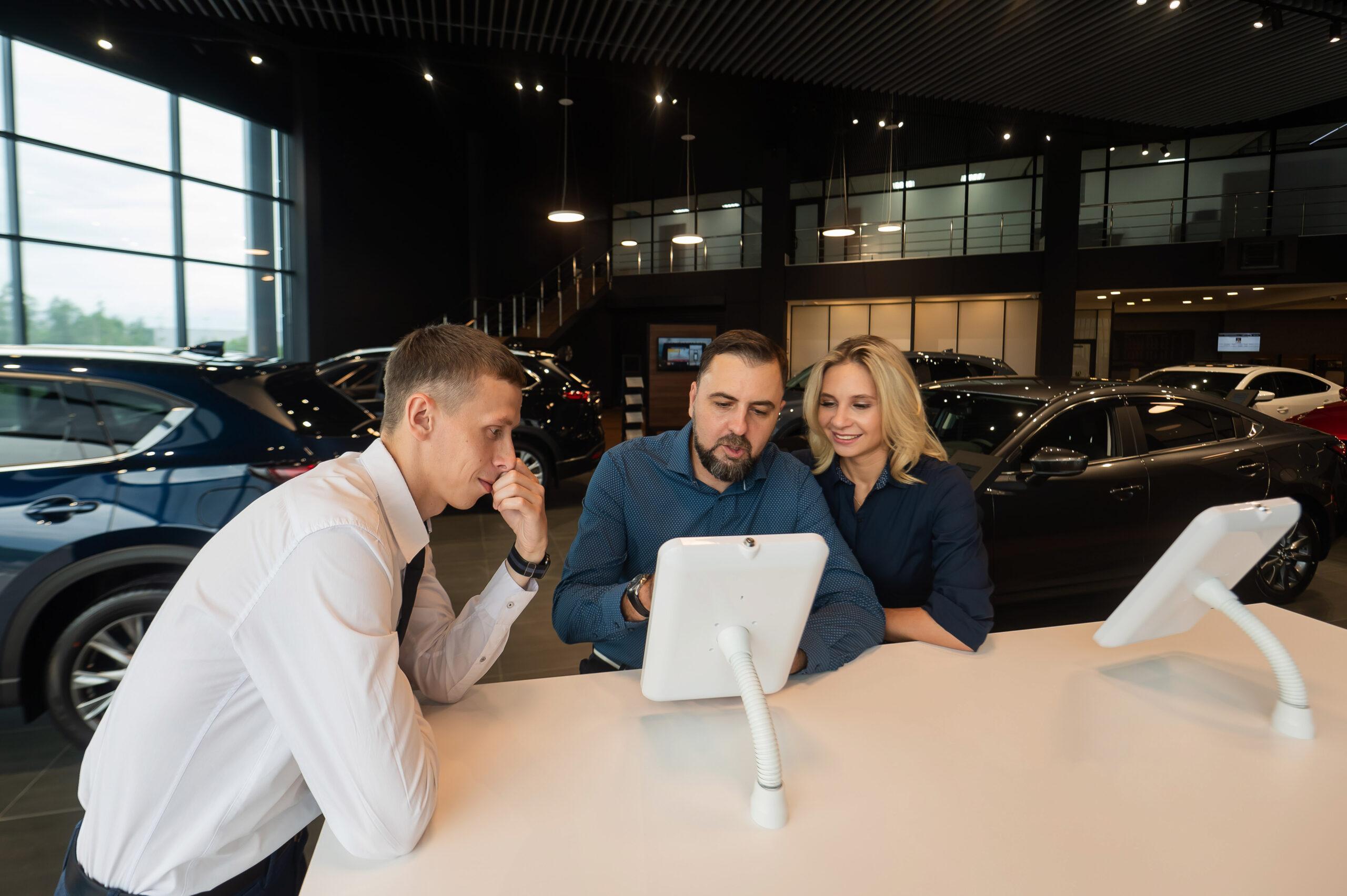Grow Your Dealership Sales with Online Personalization

Table of Contents
Table of Contents
Today we’re going to do a deep-dive into personalization, that term that keeps cropping up in digital marketing. Widely touted as the way to reach more customers and improve business results online, personalization has many facets and ramifications. So let’s get in there- what is personalization and what does it mean for your dealership?
What is personalization?
Here’s what personalized customer service looks like in a brick and mortar showroom. A customer arrives, and a salesperson offers help, asking about their interests and preferences, and providing answers to specific questions. In our dealerships, we do this naturally: no two customers are exactly the same, and staff can respond to each one using a variety of clues including specific requests as well as nonverbal cues. This process is not only natural for salespeople- it’s also a cornerstone of the dealership, built on relationships, trust and loyalty.
The only problem is, we don’t do all of our shopping in person these days. We don’t even do most of it in person. 89% of car shoppers research their next purchase online, spending tens of hours doing digital research, so that when they finally do come to the dealership, they likely already know what they want. This means that in order to provide customers with a great dealership experience, personalization needs to move online and reach through the ether to respond in real time to customers we’ve never met.
Sound crazy? Maybe. But it’s also entirely doable.
Is digital personalization that important?
In a word, yes. Across industries, 74% of customers get frustrated by a lack of personalization. Anything general, repetitive, or irrelevant can turn them away. Additionally, in e-commerce generally, almost half of customers will abandon their carts if they can’t find fast answers to their questions. There’s no question: today’s shoppers demand that the internet understand them as well as a human can.
There’s a positive angle too, though: 86% of shoppers report that personalization makes a difference in their buying decisions. More than three quarters say they choose, recommend, or spend more with brands that provide personalization. And 54% of car shoppers say they prioritize good customer experience- that is, a personalized one- over price.
It’s not just lip service, either. In one study, in-house marketers personalizing the digital experience reported a 19% increase in sales. In another, a full 89% of marketing professionals report improved business results from personalization. And yet another demonstrated that personalization can produce five to eight times ROI on marketing expenses and boost sales by 10% or even more. Companies that personalize the online shopping experience see results.
There’s no question that digital marketing is moving in the direction of greater personalization. Customers respond to it and businesses grow with it. Automotive marketing should not be the exception.
So how do I personalize the digital shopping experience at my dealership?
The key here is to see the entire car buying journey as a continuum. The digital experience should not feel fundamentally different from the in-store experience, and each stage should be infused with the same level of customization. We’ve divided this process into four steps, all areas where personalization can help build a loyal customer base and boost your bottom line : lead generation, the website experience, lead nurture, and customer retention.
Personalized lead generation
If you are using a targeting and retargeting ad campaign, you are already using personalization to bring customers to your dealership website.
Using artificial intelligence, ad targeting tracks user online behavior before and after visiting your site, and shows potentially interested customers ads likely to bring them, or bring them back, to your website. This is personalization at work: customers are selected to see your ads based on their own interests, so you see more qualified traffic on your dealership website.
Personalization on your dealership website
Shoppers browsing your dealership website are not all looking for the same thing, so offering lots of varied content is key:
- User-friendly, information-rich, and up-to-date VDPs. Customers want to see cars on your website, and they want to know that what they see is what they’ll get in person. Make sure customers browsing your VDPs can find all the information they need, including photos, features, and pricing.
- Shopping guides for beginners. If your site lacks research tools such as comparisons of popular models and quizzes to help choose the right model, the time has come to provide them. The more research customers can do on your site, the more of their questions are answered, and the less they need to look elsewhere.
- Useful, and user-friendly, trade-in and valuation tools. Again, the more you can provide answers on your site, the less shoppers will turn elsewhere and possibly never come back (a sad story, but unfortunately very real). Check these tools to make sure they truly help customers through the buying process by being helpful and easy to use.
- Special offers. Shoppers on your site definitely want to know what sales you have going on!
To make all this content really work for you, it’s crucial to ensure that the right customers are seeing it. This means having the simplest, straightforward navigation possible. It also means utilizing smart targeting technology to respond to customer behavior in real time.
If you’re new to smart targeting, you can get the full rundown in this blog post, but here’s the quick summary: smart targeting is a machine learning system that tracks your website visitors’ interests and behavior in real time, and uses that data to offer each one relevant content they’ll want to see, when they want to see it.
So for example, if someone visits your dealership website for the first time, smart targeting will allow your website to “understand” this behavior, and show them an offer for your dealership-wide Fourth of July sale- but only after allowing them time to browse for a few seconds. Customers usually dismiss offers that appear too aggressively- or simply leave the site in frustration. A smart targeting system can use data from previous customers’ sessions to determine the best time to show offers.
Now, let’s say this same customer does, in fact, dismiss the Fourth of July sale coupon, but then begins browsing VDPs, spending some time viewing the photos of one vehicle in particular. Like a salesperson helpfully pointing out relevant discounts, smart targeting observes this customer’s interest and shows them a special on that vehicle.
Similarly, if a customer has returned to your site numerous times to see the same vehicle, they will see offers on that vehicle- again, at an optimal time.
You can see how this is more useful than showing every visitor to your site the same offer on the same sedan, when some of them are looking for SUVs, some want a truck, and still others came by for an oil change. Smart targeting does the work of answering questions when those questions were never verbally asked, providing the same personalization online your customers would see in-store- and with that experience, increasing the likelihood of a conversion and visit to your showroom.
Personalized lead nurture
Personalization can make your dealership’s work to follow up with and nurture leads much more effective.
First, when a lead comes into your CRM, a close look at the data that comes with it can allows your team to provide customized follow up: page views, session duration, number of sessions, and any questions the customer asked are all points that can guide the conversation for value and addressing customer needs. That first call, email, or text really does not need to be generic, and in fact, it shouldn’t be.
A personal touch, informed by the data in your CRM about user behavior and lead submission, is a great first step in connecting with customers and moving them down the funnel.
After that first contact, the data you gained from the lead form and the follow-up conversation can all go into getting a personalized lead nurture process going. Set up segmented campaigns to offer early stage lead popular model information, and explanations of new technologies. Send your later stage leads, who are closer to buying, specials on vehicles they browsed or links to financing forms. Companies that personalize content according to leads’ buying stage see 72% higher conversion rates– and your email campaigns are a great place to do this.
Other great news for personalized lead nurture is that much of it, aside from the first phone call, can be automated. After initial setup, your leads can get the help they need with very minimal effort from your team.
Personalization for customer retention
As we said earlier, the buying journey is a continuum. It continues after the sale, when personalized follow-up should keep the relationship going. Customers who already made a purchase should continue to receive valuable information, such as vehicle updates, service reminders and offers, and, when the time comes, trade-in, upgrade, and lease purchasing information. This too must be segmented by customer for maximum personalization and tailoring.
With personalized service that continues after the sale, your dealership will encourage repeat business by letting customers know you are still thinking about and anticipating their needs. That’s a great reason to get their maintenance done in your service department instead of choosing an impersonal chain.
So those are the steps to personalization for your customers at every stage of the car buying process. But wait, you protest- this seems extremely daunting. Not to worry. It may seem like a lot at first, but with today’s technology, all this can be yours.
Will personalization take all my time, drain my dealership’s sales and BDC resources, and start a staff mutiny?
If all these types of personalization sound onerous, you’re not alone– but today’s technology makes it far easier than it sounds.
The machine learning of ad targeting interacts with your customers on its own. Marketing automation, which enables you to set up lead nurture and post-sale campaigns, ultimately saves your team time and drudgery. Smart targeting, as mentioned earlier, can track your visitors and offer them relevant content for you. The key is choosing the tools that actually work for your dealership and your customers and using them to maximum effect- so that personalization does not take all your time.
Don’t customers find personalization creepy?
You may have been wondering, despite the data that customer crave personalization, about privacy concerns or the feeling of being spied on. And in fact, customers truly do value their privacy and control over their data.
Here’s the truth: customers are comfortable with being followed, in a sense, as long as privacy guidelines are honored, and as long as they are receiving value in return.
Consider the recommendations you see on Amazon and Netflix. You understand that these systems have generated suggestions based on your previous actions- and in many cases, they save you the trouble of searching for the movies, books, groceries, and remote control helicopters you want.
In other words, personalization offers you a real value.
And the numbers bear this out. Studies show that 58% of shoppers feel comfortable with their preferences and interests being tracked in order to receive a more personalized experience. What’s more, 63% of millennials and 58% of GenXers are willing to disclose personal data for personalized discounts and offers.
Everyone wants to find the best item for them, on sale. And customers are willing to give up a degree of anonymity to make their lives easier and save them money. It’s really no different from offering a phone number to a salesperson in exchange for discount updates.
So there you have it: everything your dealership needs to know about personalizing the car shopping experience outside the showroom- so you continue to see more customers inside the showroom. Personalization helps your customers find what they want, and it helps you make your processes more effective- to reach your customers with the same superior service you always provide in person.
The result, of course? More sales and more return business.
Want to get started with a personalization campaign to end all personalization campaigns? Call us for a free consultation anytime: 216-242-1320
Fill out this form to schedule a personalized demo today!
We just need a few more details so we can personalize your demo.
Sign up for our newsletter!
We value privacy and would never spam you. We will only send you important updates about Fullpath.



